Camino del Norte Stage 1 & 2 - San Sebastián to Santander
- The outstanding gastronomic experience of San Sebastián
- The contrast of quiet fishing villages and modern cities
- Marveling at the art and architecture of the Guggenheim in Bilbao
- Meeting fellow pilgrims and sharing their stories
- Sampling the peace of the northern coast of Spain
Gallery
Itinerary
Day 1 Arrival in San SebastiánWelcome to San Sebastián, the 'Pearl of the Bay of Biscay'! Once you have arrived, why not take a stroll along the famous Playa de la Concha or Playa de la Ondarreta beaches to help you relax and unwind? In the evening, the charming old town awaits with its narrow streets and legendary pintxo bars, where you can sample the diverse flavours of Basque cuisine. If you would like to continue your Camino del Norte pilgrimage, you can start in Irún and hike the first stage to San Sebastián. Feel free to contact us – we will be happy to provide personalised advice.

A modern building located on Pio XII square, created by world famous architect Peña Ganchegui, offering excellent access to all major routes in and out of the city, and within walking distance to all major attractions in town.
From San Sebastián, a short but steep climb takes you out of the city. You will be rewarded with sweeping views and a relaxing hike along unpaved paths and clearly marked trails. Springs along the route provide cool, fresh water. Zarautz, once a tranquil fishing village, was even a favourite holiday destination for the Belgian royal family. Today's destination is Getaria, a charming former fishing and whaling village that has always attracted travellers thanks to its location. Here, you can enjoy fresh fish and a sea view at the end of the day.
Ascent: 643m (2,110ft) / Descent: 584m (1,916ft)
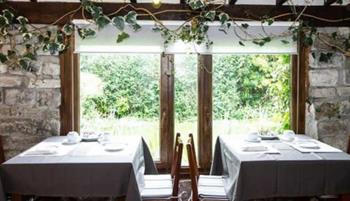
This family-run hotel is located in the old town of Getaria, with nicely decorated rooms. It has a garden where breakfast is served in summer. The views from the accommodation towards the beach are spectacular. The rooms offer TV, telephone, central heating, hairdryer and internet connection.
This stage of the Northern Route starts in the picturesque coastal town of Getaria and follows the stunning Basque coastline. En route, you will pass through the authentic fishing villages of Zumaia and Itziar, which delight visitors with their maritime charm. The varied landscape combines dramatic cliffs with gentle green hills, offering ever-changing views. Your destination for the day is Deba, a historic town boasting a beautiful beach and a rich maritime heritage. It's the perfect place to end the hike with a stroll by the sea.
Ascent: 560m (1,837ft) / Descent: 580m (1,903ft)

Zumardi is a small pension, located in a privileged area, with nine cozy and bright rooms. All rooms have TV, WIFI and private bathroom. The accommodation offers free private parking, terrace and breakfast service.
With every step, you move further away from the sea and deeper into the lush green heart of the Basque Country. The constant inclines and declines make this section one of the most challenging hikes of the entire trip. As you hike, you can look forward to quiet forests, wide meadows and impressive vistas. Once you arrive in Markina-Xemein, be sure to visit the Church of Santa María de la Asunción de Xemein. It is a destination that is well worth the effort.
Ascent: 788m (2,585ft)/ Descent: 714m (2,343ft)
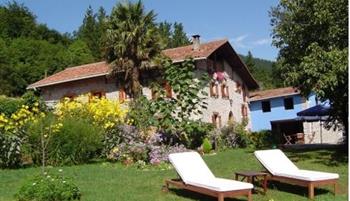
Intxauspe Landetxea is a seventeenth-century Basque farmhouse which was renovated in 2005. It is the ideal place to relax and enjoy the surrounding nature. The property has a dining room, 3 bedrooms each with double bed, private bathroom and TV, and 2 rooms that have twin beds and a shared bathroom.
As you pass through rolling hills and dense forests, you will come to the idyllically situated Zenarruza monastery on the slopes of Monte Oiz. Inside, you will find a small shop where you can take a break and enjoy sweet specialities from the monastery's own bakery. The trail then continues through the lush greenery of the Basque Country to Gernika, a town with a rich history. In 1937, it was almost completely destroyed during the Spanish Civil War, an event which was later immortalised by Pablo Picasso's world-famous work, Guernica. This is a destination that combines culture and nature in a unique way.
Ascent: 728m (2,389ft)/ Descent: 789m (2,589ft)

Located in the center of Gernika, this property has 40 rooms with bathroom, TV, heating, air conditioning, telephone and WIFI. There is a cafeteria, meeting rooms, WIFI and parking.
Following the more challenging stages of recent days, today's route leads you gently and leisurely to Lezama. The quiet route has only a few ascents and descents, inviting you to enjoy the surroundings at a relaxed pace. You can discover the green landscape and small villages along the way at your own pace. Once you arrive in Lezama, you can end the day with a delicious dinner in one of the cosy restaurants. A glass of regional wine is the perfect way to round off a relaxing day.
Ascent: 519m (1,703ft)/ Descent: 472m (1,549ft)

The Hotel Matsa, whose name in Basque mahats means grape, identified the farmhouse in the vineyards surrounding the property, which did txakolí, a type of white wine produced for sale and livelihood of the village during its 400-year history.
After a short hike, you will reach the lively city of Bilbao, where you will have the afternoon free to explore at your leisure. Take a stroll through the streets and experience the blend of traditional and modern architecture. Highlights include the impressive Santiago Cathedral and the world-renowned Guggenheim Museum. However, the city's charming alleys, cafés and markets are also well worth exploring.
Ascent: 326m (1,070ft) / Descent: 380m (1,247ft)

This elegant hotel offers air-conditioned rooms with free Wi-Fi. Each room is spacious, with a minibar and a safe deposit box. The marble bathrooms include a hairdryer and toiletries.
Today is a rest day in Bilbao. Take this opportunity to explore the city at your own pace. Take a stroll through the old town to discover its charming alleys, markets and cafés, or admire the modern architecture around the Guggenheim Museum. A visit to Santiago Cathedral is also worthwhile, as it allows you to experience the city's cultural diversity. It's an ideal day to recharge your batteries and experience the best of Bilbao.

This elegant hotel offers air-conditioned rooms with free Wi-Fi. Each room is spacious, with a minibar and a safe deposit box. The marble bathrooms include a hairdryer and toiletries.
After breakfast, you will leave Bilbao and follow the course of the Nervión River, passing through charming suburbs and alongside lush green riverbanks. This relaxed route offers beautiful views of the water and the surrounding area. As you travel, you can enjoy the blend of urban life and nature. Your destination for the day is Portugalete, a town with a maritime atmosphere and historic charm. You can end the day here with a stroll through the old town or along the waterfront promenade.
Ascent: 464m (1,522ft)/ Descent: 461m (1,513ft)

This magnificent historic building has been completely refurbished whilst still respecting its 19th century façade. It is located at the foot of the impressive Hanging Bridge of Vizcaya. The hotel has a total of 74 rooms which have private bathrooms, minibar, safety deposit box and free WIFI. In addition the accommodation has parking, and a guests can enjoy a meal at the restaurant which serves both modern and traditional Basque fare.
From Pobeña, the Camino del Norte returns to the coast, passing green hills and offering sweeping views of the sea. Following old railway lines that once transported ore from the mines to the ships, the route tells a part of the region's industrial history. Impressive panoramic views of the coast and sea open up again and again along the way. The destination for the day is the charming town of Castro Urdiales, where the harbour and old town are perfect for strolling around. In the evening, you can relax with a walk along the promenade or in one of the cosy restaurants.
Ascent: 472m (1,549ft)/ Descent: 477m (1,565ft)
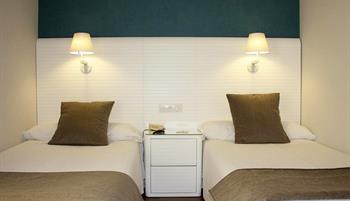
Modern and comfortable beach hotel located near the Beach Promenade and at the foot of Brazomar Beach. The 66 hotel rooms mix classic decor with contemporary facilities, such as music equipment and free WiFi.
Starting in Castro Urdiales, the trail climbs gently along the coast, offering breathtaking views of the Bay of Biscay. After passing through Islares, the route winds its way into the lush green countryside, where rolling hills dominate the landscape. You will be tested by a steep ascent and descent, but you will be rewarded with impressive panoramic views. Finally, you will reach Liendo, the charming village where you will spend the night.
Ascent: 397m (1,303ft) / Descent: 382m (1,253ft)

The house is in a building considered ´artistic heritage´ of the valley. With her fifteenth-century tower attached to a house of s. XII, which include the family coat of arms “Sopeña”. It has 10 spacious double rooms luxuriously furnished, with television, safe, telephone, bathrooms with magnifying mirror, hairdryer and amenities. Besides the reception, buffet breakfast room, game room, reading room, sauna, bar, gym, garage, wifi, private garden and hotel service.
Today's stage mostly runs along the coast, offering fantastic views of white, sandy beaches. After leaving Liendo, you will reach Laredo, a popular summer destination for people from the north of Spain. From El Puntal, you can take a ferry to Santoña and enjoy the scenery at a relaxed pace (approx. €2, payable on site – please check the ferry timetable in advance). En route, you will pass beautiful beaches such as Playa de Berria. Your destination for the day is Noja, where you can finish off with a walk by the sea.
Ascent: 259m (850ft) / Descent: 277m (909ft)
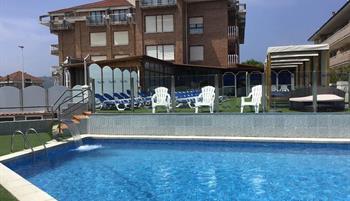
Located right in front of Ris de Noja beach in Cantabria, this accommodation is equipped with a swimming pool, hammocks, and a recreational area to use during your stay.
Today, we will leave the coast behind and head into the peaceful countryside, where the route will wind its way along mostly flat paths through fields and small villages. This gentle stage is perfect for letting your gaze wander and enjoying the rural tranquillity. As you walk, you will be accompanied by green meadows and scattered farms, which are characteristic of this region. Once you arrive in Galizano, you will find a peaceful spot where you can unwind.
Ascent: 237m (778ft) / Descent: 226m (742ft)

Hotel Gastronómico Torre de Galizano is a Renaissance-style building with a contemporary indoor finish. Rooms offer a jacuzzi bath, free WiFi, and air conditioning.
Today's short, mostly flat stage will take you towards Santander, where you can enjoy views of the sea and beautiful sandy beaches. Enjoy the fresh sea air along the way, and if the weather is good, why not dip your feet in the water or even treat yourself to a refreshing swim? In Somo, you can take a ferry to Santander (approx. €3, payable on site) and enjoy the coastal views from the water. The port city welcomes you with a blend of maritime charm and urban sophistication. It's the perfect place to relax in the evening.
Ascent: 91m (299ft) / Descent: 99m (325ft)

This modern hotel opened in 2003. It offers 92 spacious rooms featuring contemporary style furniture. Rooms have a safe, minibar, large desk with optional internet connection, TV and Canal + and individually controlled air conditioning and central heating. The bathrooms are equally spacious and bright, equipped with magnifying mirror, heated towel rail, telephone, background music and amenities designed by Javier Mariscal.
After an eventful few days on the Camino del Norte, today is the day to say goodbye. Depending on your departure time, you may have time for one last walk or coffee in a relaxed setting. Then you can begin your journey home or onwards. You will carry with you many memories of the stunning northern Spanish coastline and the encounters you had along the Way of St. James.
This trip has a carbon score of 8kg per person per night, meaning it’s one of our best trips! For comparison, a carbon count of 8kg is equivalent to 12 pints of local beer at the bar. Here at Macs, we pride ourselves on being a responsible travel company and continue to adopt, develop and innovate ways to positively impact the environment. Find out more information on how we've carbon counted our trips.
Other Information
Is it for me?The Camino del Norte offers a more authentic pilgrim experience than the Camino Frances. Though the walking is considerably tougher the rewards are arguably much greater.
Pilgrimages | For those looking to follow a path of self-discovery. Our Pilgrimage and Camino routes take you on a journey through diverse landscapes and local flavours, while meeting like-minded adventurers along the way.
Inn to Inn Walking | Walk from place-to-place changing accommodations each night. Generally staying in B&Bs, inns, and guesthouses.
Solo Travellers, Families with Teens
The minimum age for this tour is: 12 Years
This walk is graded moderate to strenuous and includes daily walks of between 12-28 km per day.
You can expect to walk for between three and eight hours each day and much of it is rather arduous walking with some steep inclines/declines.
The Camino Del Norte follows a mixture of farm/dirt tracks, minor roads and footpaths.
The accommodation in San Sebastian, Santander and all larger towns, will be in 3 star hotels. The rest will be a mixture of rural hotels and hostals (a name used to describe small Spanish hotels and guesthouses), all with private rooms and en-suite, that offer a warm welcome to walkers, traditional hospitality and delicious local food. We do recommend that you book this trip early as the area is always popular and the hotels and inns do fill up early, especially in high season.
Solo Walkers & Single Rooms
The Camino is available to solo walkers at a single supplement.
Meals
A local continental breakfast is included each morning (apart from Bustio), which can sometimes just be coffee, bread and orange juice. Lunch and dinner are not included as standard so you are free to choose from the available options. Every place you stop will have evening meals available, you can get a pilgrims menu for about 10 euros which includes 3 courses, wine and water!
Additional Nights
There is so much to see and do along the route that many of our clients choose to add extra nights along the walk either as a rest day or simply to do some extra sightseeing. If you are walking the route solo try not to add too many extra nights along the way as you will lose touch with those you have met.
Fewer Nights
It is possible to walk the Camino del Norte in less time but we would not recommend this.
The route is marked with yellow painted arrows but please take care at intersections. There are sections on the route where you will divert to follow the red and white stripes of the GR routes. There will always be other walkers around in case you are looking for help. You will be supplied with turn by turn route notes and detailed maps so you will have no problem following the route each day.
In addition to the printed route notes, you will receive in your travel pack, you will also have access to our Macs Adventure App, allowing you to follow the route on richly detailed mapping on your smartphone.
- Accommodation in small rural hotels and hostels with en-suite W/C.
- 13 Breakfasts
- Baggage Transfers
- A detailed information pack for the group leader including route notes, maps, and local information.
- Camino del Norte guide book.
- Emergency telephone support from our local and UK offices in the event of a problem.
- Return travel to Spain.
- Lunches, dinners, snacks or drinks.
- Travel Insurance.
- Personal Equipment.
- Taxi transfers or public transport should you need to skip a stage.
- Additional nights accommodation along the way.
This trip is available to start on any day from the beginning of March to the end of October.
The best time to walk the Camino depends on your personal preference!
Spring (April to June) is a fantastic choice. Expect pleasant temperatures, blooming landscapes, and fewer crowds than summer. Be prepared for the potential of spring showers.
Summer (July and August) brings sweltering heat to much of Spain, but the northern regions remain refreshingly mild thanks to their coastal climates. If you're a social butterfly, this is your season! The trails are buzzing with fellow pilgrims, creating an unbeatable atmosphere for meeting people, local festivals, and sharing stories.
Autumn (September to early November) is another excellent time to go. You'll enjoy milder temperatures, stunning autumn colors, and quieter trails as the summer crowds dwindle. But, much like spring, there's still a chance of rain—because nature loves keeping us on our toes!
Flying to Bilbao is the best way to get to San Sebastian. Direct flights are available from London Heathrow, Stansted, Bristol and Manchester.
If you are traveling from outwith Europe, Madrid is a good hub to fly into. San Sebastian can be reached by ALSA bus in 6.5 hours and Santander in 5.5 hours.
Flying back from Santander is the best option. Direct flights are available to London Heathrow, Stansted, Bristol and Manchester.
However, it is easy to fly in and out of Bilbao and take an ALSA bus between the cities.
If you are traveling internationally, Madrid is a good hub to fly out of. Madrid can be reached via San Sebastian by ALSA bus in 6.5 hours and Santander in 5.5 hours.
Baggage transfers are included (max 20kg per person). Your main bag will be transferred each day between your overnight accommodation so that you only need to walk with a day pack. There is a supplement applicable for solo walkers on baggage transfers due to the fact that the transfer costs are usually shared.
Pilgrim Passport & Compostela
Your Pilgrim Passport (Credencial del Peregrino) and scallop shell will be waiting at your first accommodation. The Passport isn’t just practical—it’s a beautiful record of your Camino journey, officially issued by the Church of St. James. Along the route, you'll collect stamps (sellos) from albergues, churches, cafes, and more. Each stamp is a colorful reminder of your journey. To earn your Compostela Certificate in Santiago, you must walk at least the final 100 km, with your stamps serving as proof of this accomplishment.
Please be prepared by packing all necessary items, for example, proper rain gear (jacket and pants), sun hat and sunscreen. Your information pack has a detailed equipment list which includes standard walking/cycling gear such as good walking boots or shoes, warm and waterproof clothes for the cooler months and lightweight clothing for summer, and a day pack.
The average daily distance of our Camino tours are between 20 and 25 kilometers and you can expect to walk for between five and eight hours each day and much of it is rather arduous walking. You should do as much walking as possible prior to your walk as this will simply add to your enjoyment. That said if you are not at peak fitness you will find you will soon walk yourself fit.
A mixture of farm/dirt tracks, minor roads and footpaths. The route is marked with yellow painted arrows but please take care at intersections. There are sections on the route where you will divert to follow the red and white stripes of the GR routes. There will always be other walkers around in-case you are looking for help.
We suggest you book as far in advance as possible as the Camino is extremely popular.Numbers can rise by up to 100, 000 people. We will always try and accommodate late bookings but realistically you need to book at least 6 weeks prior to departure.
Yes, some people prefer to walk carrying their own bags as a true pilgrim would have. You can select the option for removing the baggage transfers in Step 2 of the Booking Engine.
Spring (April to June) is a fantastic choice with pleasant temperatures and fewer crowds for a relaxing experience. The northern regions remain refreshingly mild in July and August thanks to their coastal climates, especially in comparison to central and southern Spain. The trails are buzzing with fellow pilgrims during the summer months. Autumn (September to early November) is another excellent time to go, with stunning autumn colors, and quieter trails. During the spring and autumn, it's more likely to experience a shower here or there. There's really no bad time to travel on the Camino.
Public transport and taxis are available, if you are need of support our local partner in Spain will be more that happy to help.
Unfortunately we are unable to change your accommodation bookings and itinerary once you start walking as alternative accommodation is generally not available at such short notice.
Good news! Your Pilgrim Passport (“Credencial del Peregrino”) and shell will be waiting for you at your first accommodation on Day 1. Think of the Pilgrim Passport as a record of your incredible journey along the Camino, issued by the Church of St. James. The Scallop Shell (or "Concha de Vieira") is an iconic symbol of the Camino and is like a badge of honor. You'll see fellow pilgrims proudly displaying theirs on backpacks or hanging them from walking sticks as a sign of their trek to Santiago.
But here’s where it gets fun—you’ll collect stamps (called "sellos") on your Passport at albergues, churches, cafes, and other stops along the route. To receive your Compostela Certificate at the end of your pilgrimage in Santiago, you need to walk at least the final 100km of the Camino. For other sections of the trail, the Passport serves as a stunning keepsake featuring all the colorful stamps you collect along the way.
-
 WalkingAdventure of the Week: Camino de Santiago Final Stage - Sarria to SantiagoRead More3 Min Read03 April 2019
WalkingAdventure of the Week: Camino de Santiago Final Stage - Sarria to SantiagoRead More3 Min Read03 April 2019 -
 Camino23 Essential Camino de Santiago FAQsRead More7 Min Read09 February 2018
Camino23 Essential Camino de Santiago FAQsRead More7 Min Read09 February 2018 -
 Walking4 Foods You'll Eat on the CaminoRead More2 Min Read26 January 2018
Walking4 Foods You'll Eat on the CaminoRead More2 Min Read26 January 2018 -
 CaminoCamino de Santiago Travel GuideRead More4 Min Read11 December 2017
CaminoCamino de Santiago Travel GuideRead More4 Min Read11 December 2017 -
 CaminoEating and Drinking on the Camino Frances - Sarria to SantiagoRead More3 Min Read11 December 2017
CaminoEating and Drinking on the Camino Frances - Sarria to SantiagoRead More3 Min Read11 December 2017 -
 CaminoEssential Phrases for the Camino de SantiagoRead More2 Min Read08 December 2017
CaminoEssential Phrases for the Camino de SantiagoRead More2 Min Read08 December 2017 -
 CaminoEating and Drinking on the Camino de SantiagoRead More4 Min Read08 December 2017
CaminoEating and Drinking on the Camino de SantiagoRead More4 Min Read08 December 2017 -
 WalkingHow fit do I need to be to walk the Camino? Advice & fitness tipsRead More3 Min Read05 December 2017
WalkingHow fit do I need to be to walk the Camino? Advice & fitness tipsRead More3 Min Read05 December 2017 -
 WalkingWhich stage of the Camino de Santiago (Camino Frances) should I walk?Read More7 Min Read05 December 2017
WalkingWhich stage of the Camino de Santiago (Camino Frances) should I walk?Read More7 Min Read05 December 2017 -
 WalkingHow to avoid blisters on a walking holidayRead More3 Min Read06 February 2015
WalkingHow to avoid blisters on a walking holidayRead More3 Min Read06 February 2015 -
 WalkingIs the first day of the French Way Camino the hardest?Read More2 Min Read27 May 2014
WalkingIs the first day of the French Way Camino the hardest?Read More2 Min Read27 May 2014 -
 WalkingCamino Guide Part 3: Which Pilgrimage Route? - Camino FrancesRead More2 Min Read13 February 2014
WalkingCamino Guide Part 3: Which Pilgrimage Route? - Camino FrancesRead More2 Min Read13 February 2014 -
 CaminoCamino Guide 1.2: When to go? Walk or Cycle? Where to Stay?Read More2 Min Read07 February 2014
CaminoCamino Guide 1.2: When to go? Walk or Cycle? Where to Stay?Read More2 Min Read07 February 2014 -
 CaminoWalking the Camino - The first day from St Jean to RoncesvallesRead More2 Min Read20 December 2013
CaminoWalking the Camino - The first day from St Jean to RoncesvallesRead More2 Min Read20 December 2013 -
 WalkingWhat do you need to know about walking from Sarria to SantiagoRead More3 Min Read18 October 2013
WalkingWhat do you need to know about walking from Sarria to SantiagoRead More3 Min Read18 October 2013 -
 How To Avoid The Perils Associated With Ticks?Read More3 Min Read30 August 2019
How To Avoid The Perils Associated With Ticks?Read More3 Min Read30 August 2019 -
 Blessings Along "The Way" - Part 1Read More4 Min Read20 April 2020
Blessings Along "The Way" - Part 1Read More4 Min Read20 April 2020 -
 Blessings Along "The Way" - Part 2Read More4 Min Read22 April 2020
Blessings Along "The Way" - Part 2Read More4 Min Read22 April 2020 -
 Blessings Along "The Way" - Parts 3 & 4Read More3 Min Read28 April 2020
Blessings Along "The Way" - Parts 3 & 4Read More3 Min Read28 April 2020 -
 Blessings Along "The Way" - Part 5Read More3 Min Read01 May 2020
Blessings Along "The Way" - Part 5Read More3 Min Read01 May 2020 -
 Regional wines of the Camino InviernoRead More1 Min Read19 January 2021
Regional wines of the Camino InviernoRead More1 Min Read19 January 2021 -
 Tips & AdviceSantiago de Compostela Cathedral Restoration CompletedRead More1 Min Read26 January 2021
Tips & AdviceSantiago de Compostela Cathedral Restoration CompletedRead More1 Min Read26 January 2021 -
 Which Camino is for me?Read More5 Min Read04 November 2024
Which Camino is for me?Read More5 Min Read04 November 2024 -
 Camino & PilgrimagesWhat is a Pilgrimage?Read More2 Min Read25 May 2023
Camino & PilgrimagesWhat is a Pilgrimage?Read More2 Min Read25 May 2023 -
 CaminoKindness, community and camaraderie on the CaminoRead More1 Min Read27 February 2024
CaminoKindness, community and camaraderie on the CaminoRead More1 Min Read27 February 2024 -
 Camino & PilgrimagesCamino de Santiago Shell Meaning & SymbolismRead More2 Min Read31 January 2025
Camino & PilgrimagesCamino de Santiago Shell Meaning & SymbolismRead More2 Min Read31 January 2025 -
 Camino & PilgrimagesCamino Portuguese Coastal vs Camino Portuguese Central RouteRead More3 Min Read09 April 2025
Camino & PilgrimagesCamino Portuguese Coastal vs Camino Portuguese Central RouteRead More3 Min Read09 April 2025 -
 Camino & PilgrimagesCamino del Norte vs Camino Primitivo: Which is for you?Read More4 Min Read30 September 2025
Camino & PilgrimagesCamino del Norte vs Camino Primitivo: Which is for you?Read More4 Min Read30 September 2025 -
 WalkingInspired by Robson Green’s World’s Most Amazing Walks? Here’s How to Follow in His FootstepsRead More7 Min Read01 December 2025
WalkingInspired by Robson Green’s World’s Most Amazing Walks? Here’s How to Follow in His FootstepsRead More7 Min Read01 December 2025 -
 CaminoWalking the Camino del Norte: My first CaminoRead More3 Min Read22 November 2018
CaminoWalking the Camino del Norte: My first CaminoRead More3 Min Read22 November 2018 -
 Walking9 of the Best Wilderness MoviesRead More4 Min Read11 August 2017
Walking9 of the Best Wilderness MoviesRead More4 Min Read11 August 2017 -
 WalkingAdventure of the Week: Picos de Europa to the CoastRead More3 Min Read25 July 2018
WalkingAdventure of the Week: Picos de Europa to the CoastRead More3 Min Read25 July 2018 -
 WalkingAdventure of the Week: Mallorca: Tramuntana TrailsRead More2 Min Read28 September 2017
WalkingAdventure of the Week: Mallorca: Tramuntana TrailsRead More2 Min Read28 September 2017 -
 WalkingThe Basque Country: 15 interesting things to knowRead More3 Min Read20 July 2017
WalkingThe Basque Country: 15 interesting things to knowRead More3 Min Read20 July 2017 -
 CyclingDiscover: Spain’s fabulous feriasRead More2 Min Read23 March 2017
CyclingDiscover: Spain’s fabulous feriasRead More2 Min Read23 March 2017 -
 WalkingMy 4 Must-Go Routes or Regions for Adventure in SpainRead More2 Min Read23 March 2017
WalkingMy 4 Must-Go Routes or Regions for Adventure in SpainRead More2 Min Read23 March 2017 -
 7 Photos that will make you book a flight to Spain!Read More1 Min Read22 March 2017
7 Photos that will make you book a flight to Spain!Read More1 Min Read22 March 2017 -
 9 Reasons to Visit CataloniaRead More2 Min Read24 March 2016
9 Reasons to Visit CataloniaRead More2 Min Read24 March 2016 -
 WalkingWalking Holidays in Catalonia: FAQ'sRead More1 Min Read06 March 2016
WalkingWalking Holidays in Catalonia: FAQ'sRead More1 Min Read06 March 2016 -
 Tips & Advice10 things to know about the Balearic IslandsRead More3 Min Read15 February 2016
Tips & Advice10 things to know about the Balearic IslandsRead More3 Min Read15 February 2016 -
 WalkingWhere to go on your walking holiday in NovemberRead More2 Min Read15 September 2023
WalkingWhere to go on your walking holiday in NovemberRead More2 Min Read15 September 2023 -
 WalkingTop Winter Walking Destinations: The CanariesRead More2 Min Read10 October 2023
WalkingTop Winter Walking Destinations: The CanariesRead More2 Min Read10 October 2023 -
 Hiking in Style - You're Worth it!Read More3 Min Read26 August 2019
Hiking in Style - You're Worth it!Read More3 Min Read26 August 2019 -
 WalkingHidden Gems - The Town of Three LiesRead More3 Min Read06 February 2020
WalkingHidden Gems - The Town of Three LiesRead More3 Min Read06 February 2020 -
 Tips & AdviceEssential Phrases for SpainRead More1 Min Read17 January 2022
Tips & AdviceEssential Phrases for SpainRead More1 Min Read17 January 2022 -
 WalkingWhich part of Spain is right for me?Read More2 Min Read18 January 2022
WalkingWhich part of Spain is right for me?Read More2 Min Read18 January 2022 -
 Walking5 reasons I loved the Sierra de Aracena!Read More1 Min Read18 January 2022
Walking5 reasons I loved the Sierra de Aracena!Read More1 Min Read18 January 2022 -
 5 Must-See Salvador Dalí sites in CataloniaRead More1 Min Read26 January 2022
5 Must-See Salvador Dalí sites in CataloniaRead More1 Min Read26 January 2022 -
 Tips & Advice10 dishes you have to try in Andalucia!Read More1 Min Read14 February 2022
Tips & Advice10 dishes you have to try in Andalucia!Read More1 Min Read14 February 2022 -
 8 Postcards from the Pueblos Blancos!Read More0 Min Read15 February 2022
8 Postcards from the Pueblos Blancos!Read More0 Min Read15 February 2022 -
 Top 8 Beaches of the Balearic IslandsRead More1 Min Read22 February 2022
Top 8 Beaches of the Balearic IslandsRead More1 Min Read22 February 2022 -
 Balearic Islands 101: A Guide to MenorcaRead More3 Min Read01 March 2022
Balearic Islands 101: A Guide to MenorcaRead More3 Min Read01 March 2022 -
 An Insider's guide to MallorcaRead More3 Min Read01 March 2022
An Insider's guide to MallorcaRead More3 Min Read01 March 2022 -
 Sustainable TravelPeople Behind the Scenery - The Wishkeeper of the Catalan CoastRead More2 Min Read30 September 2025
Sustainable TravelPeople Behind the Scenery - The Wishkeeper of the Catalan CoastRead More2 Min Read30 September 2025
-
Save %8 Days 7 Nights
Camino del Norte Stage 1 - San Sebastián to Bilbao
Walk from San Sebastian to Bilbao through the green hills and coastal villages of the Basque CountryHighlights- San Sebastian, a gastronomic experience.
- The wonderful Guggenheim in Bilbao.
- The green hills of the Basque Country.
-
Save %14 Days 13 Nights
Camino Stage 1 & 2 St Jean-Pied-de-Port to Burgos
Combine the first two stages of the Camino Frances, walking from St Jean to Burgos.Highlights- Cross the French/Spanish border over the Pyrenees
- See Logroño, capital of the Rioja wine region
- Overnight in the medieval city of Burgos
-
Save %15 Days 14 Nights
Camino Portugués Coastal Way
Walk along the Atlantic coast on an interesting variation of the Camino Portuguese central routeHighlights- Spot varied birdlife along the coast
- The medieval towns of Baiona and Pontevedra
- Dine on fine seafood and sip on ruby port
- 5 Days 4 Nights
West Highland Way Escape
Our popular short break inn-to-inn itinerary on Scotland's most iconic long-distance trail.Highlights- Walk the most scenic northern part of the trail
- Explore the remote Rannoch Moor and iconic Glencoe
- Finish in Fort William at the base of Ben Nevis
WHY MACS?

As Seen In

Around Since 2003

24,000+ Customer Reviews





































































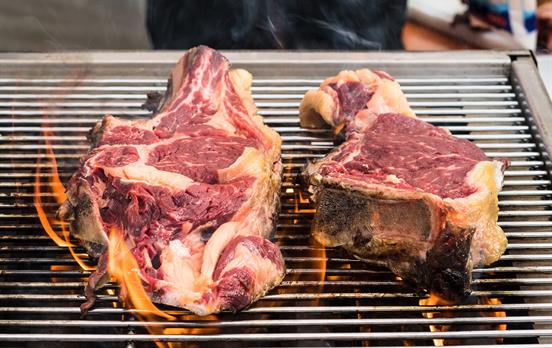
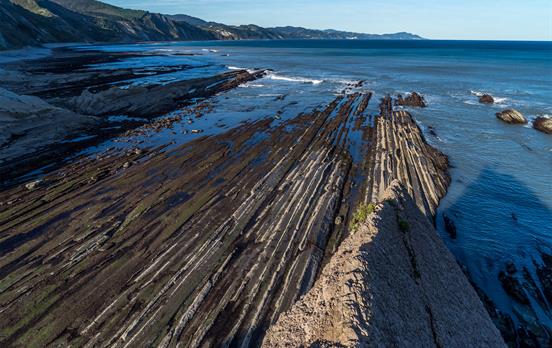

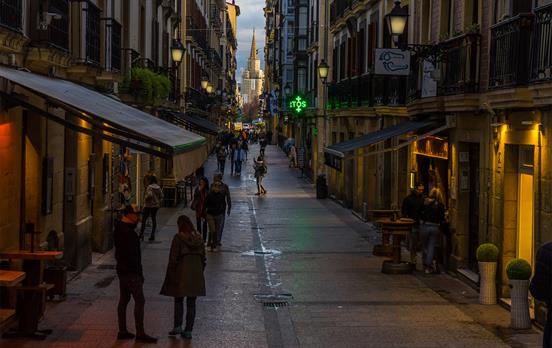
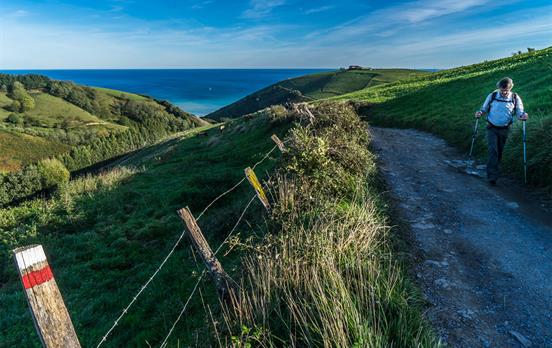
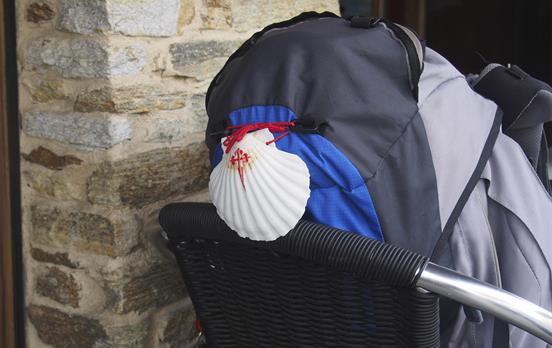

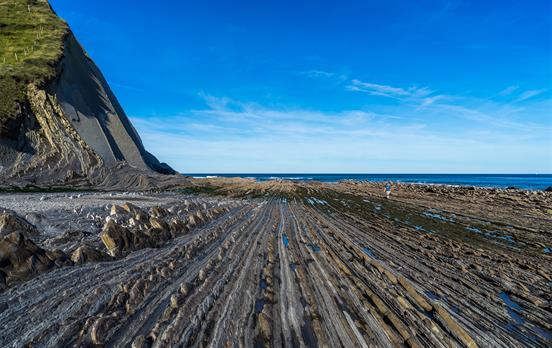
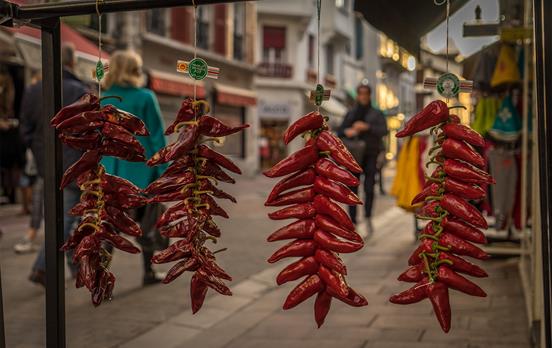
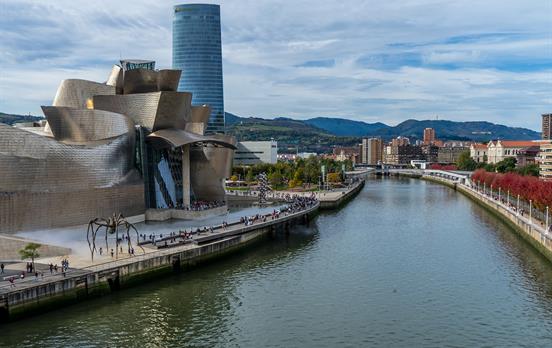

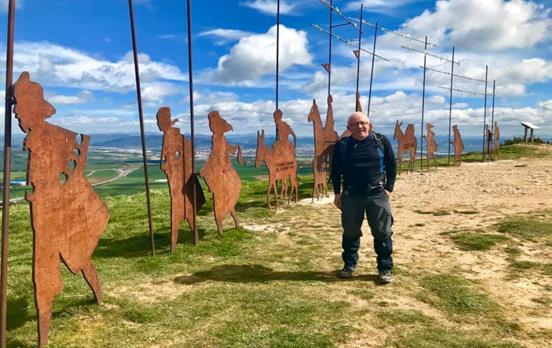
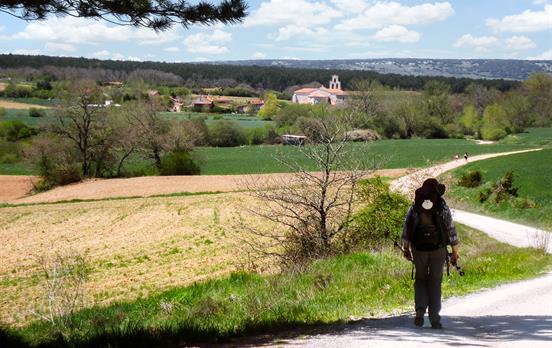
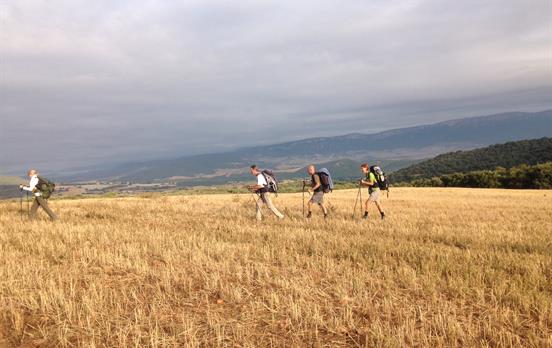

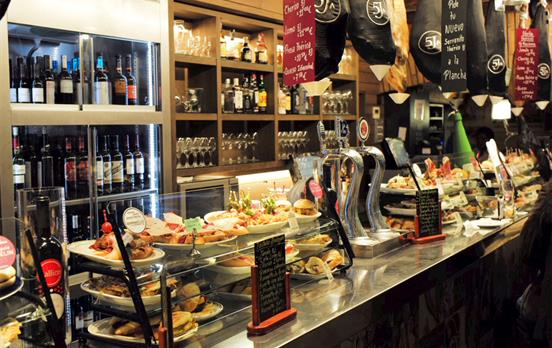
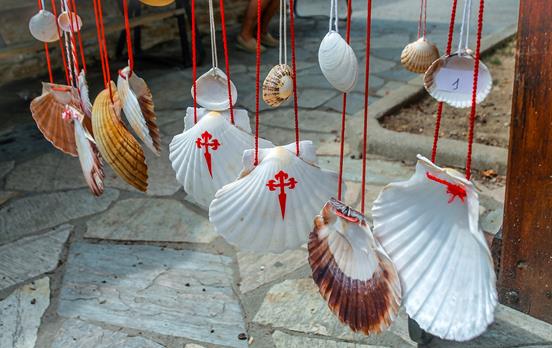
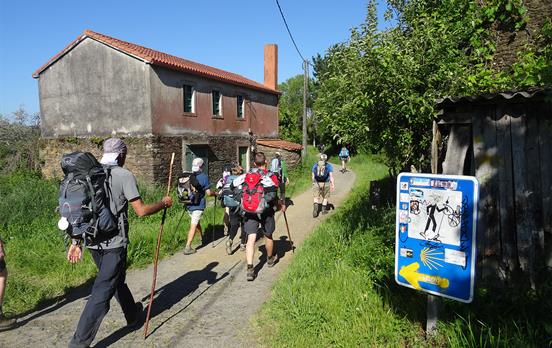
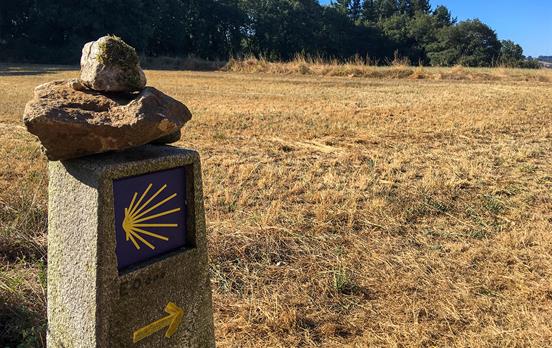


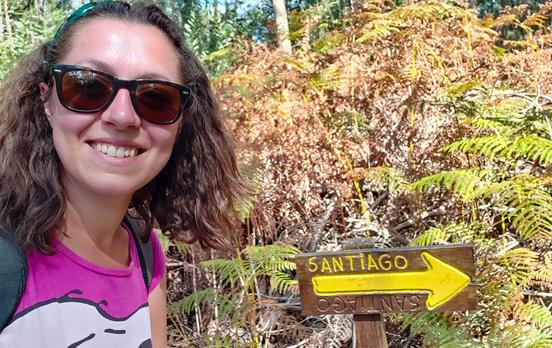


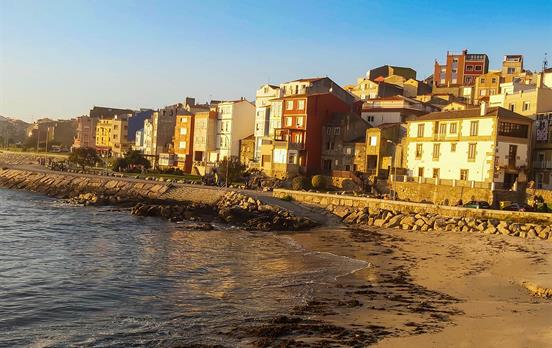


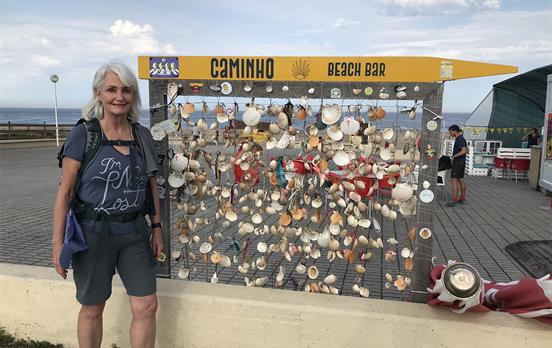
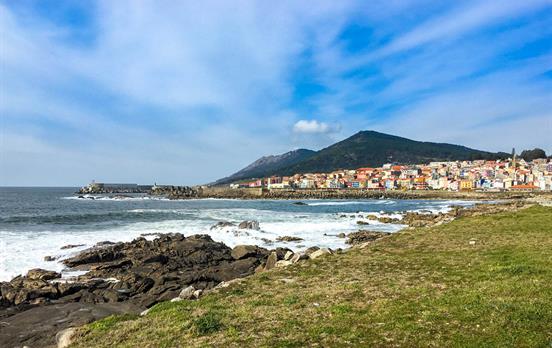
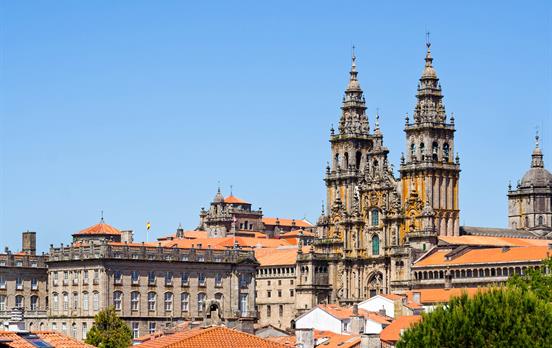

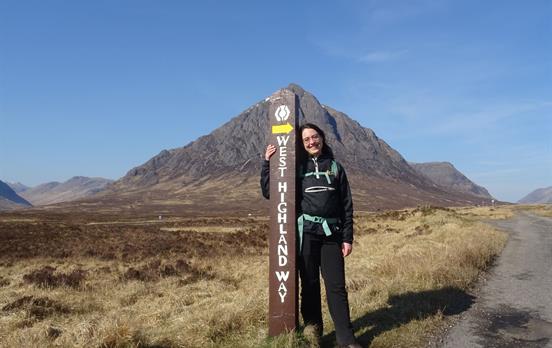
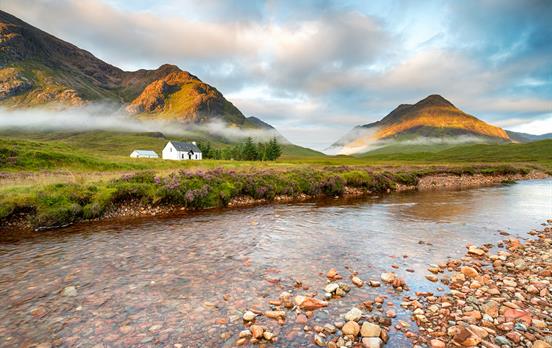


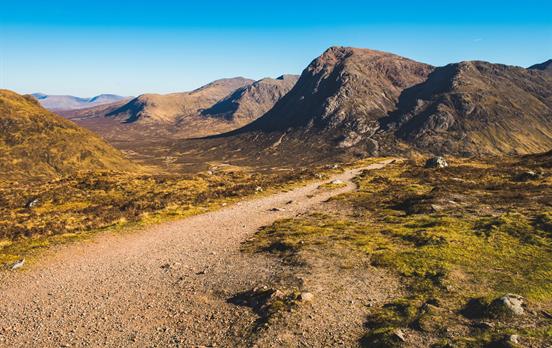
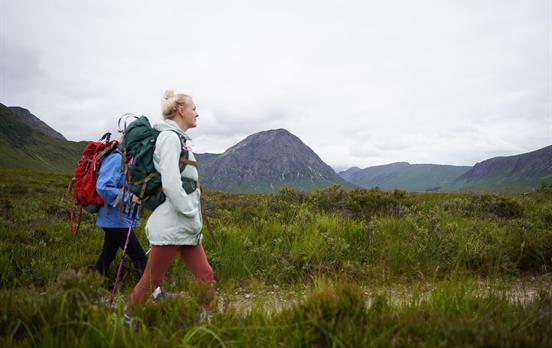
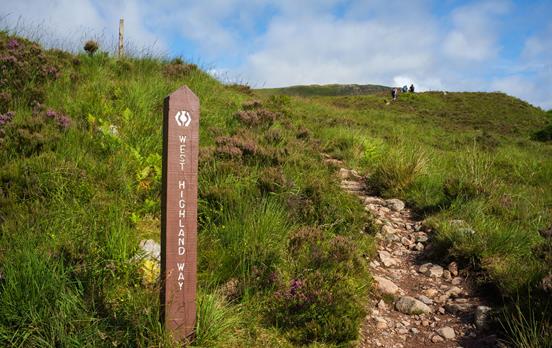

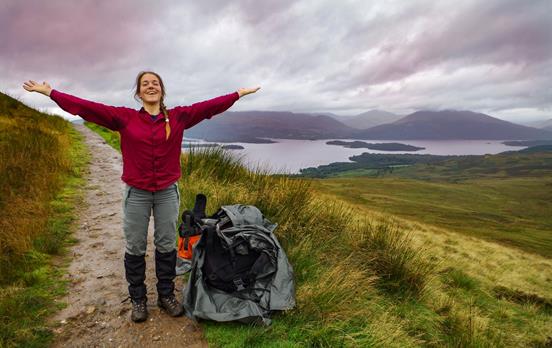


 Australia
Australia New Zealand
New Zealand South Africa
South Africa European Union
European Union